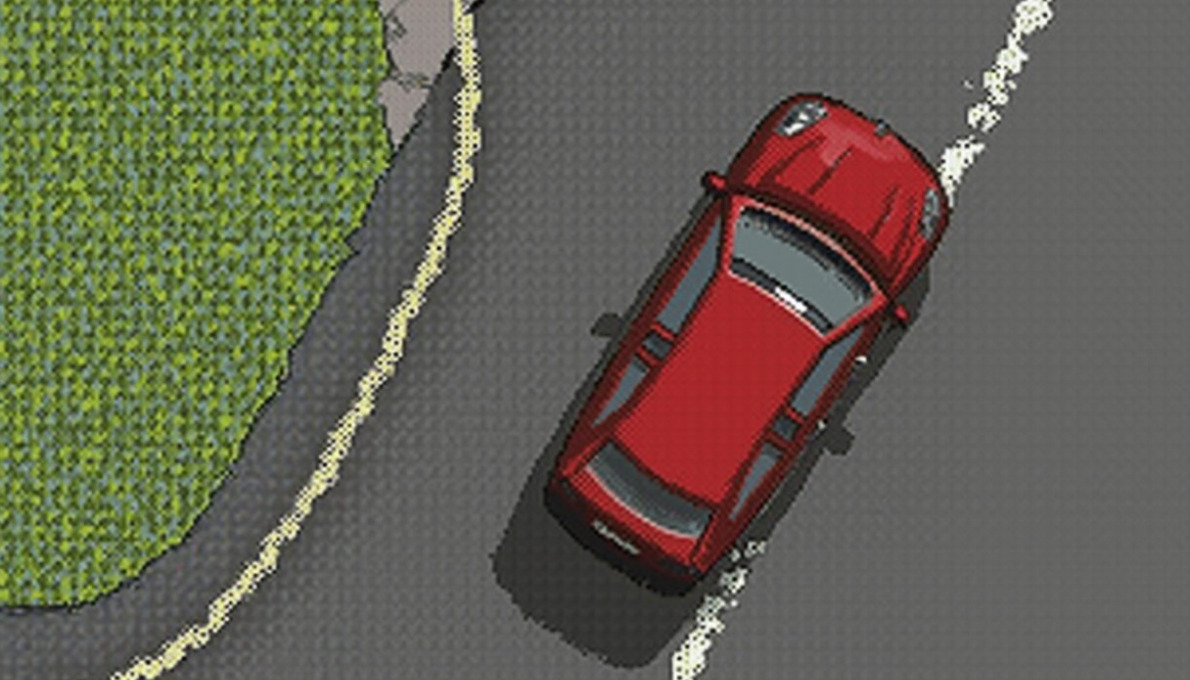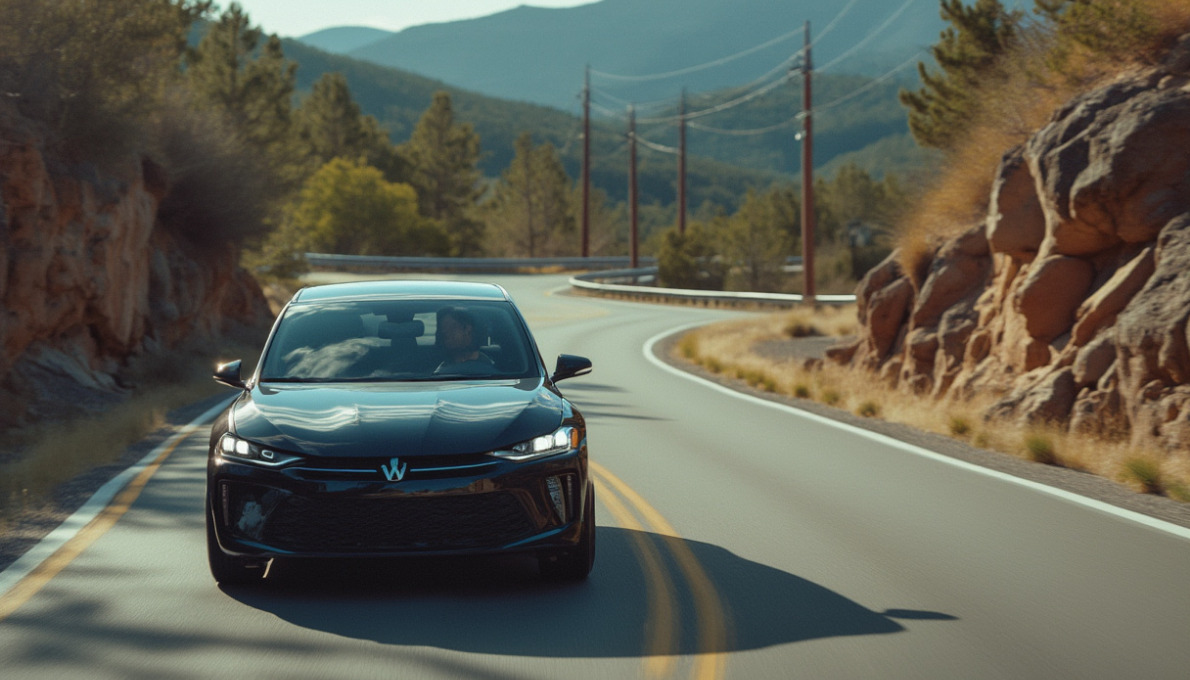Advanced car driving techniques: 10 Powerful Tips for Safety 2025
Mastering Control: Beyond Basic Driving Skills
Ever noticed how some drivers seem completely at ease behind the wheel, even in tricky situations? That’s no accident. Advanced car driving techniques transform ordinary drivers into road masters who handle their vehicles with precision and confidence.
Think of these techniques as your driving superpower. They’re specialized skills that take you beyond just knowing how to operate a vehicle. Instead of merely reacting to situations, you’ll anticipate and control them.
The beauty of these techniques lies in their practical benefits. Imagine being able to safely steer around a sudden obstacle without panicking, or taking a challenging corner with smooth precision. These aren’t just fancy skills for race drivers – they’re valuable tools for everyday driving.
When you master threshold braking, you’ll stop more effectively without locking your wheels. With trail braking, you’ll flow through corners with grace, gradually releasing brake pressure while turning. Skid control helps you manage those heart-stopping moments when tires lose grip, while understanding the racing line lets you take corners with maximum efficiency and stability.
Some techniques might sound counterintuitive at first – like left-foot braking for smoother transitions between pedals. And then there’s the art of vision techniques (including “Owl Vision”), where you train yourself to look far ahead while maintaining awareness of your surroundings. Mastering weight transfer management helps you feel how braking and acceleration shift your vehicle’s balance, giving you better control in all situations.
“Don’t put your foot on the gas pedal until you’re sure that you’ll never have to take it off again,” said racing legend Sir Jackie Stewart. This wisdom captures the essence of advanced driving – thoughtful precision replaces reactive responses.
The benefits go beyond just looking cool behind the wheel. Studies show drivers with advanced training are up to 25% less likely to experience accidents compared to those with basic skills alone. Insurance companies have noticed too, offering discounts between 5-15% for drivers who invest in these skills.
Your wallet will thank you at the gas pump as well. These techniques can improve fuel efficiency by 10-15% through smoother, more deliberate driving. And perhaps most valuable of all is the confidence that comes from knowing you can handle whatever the road throws your way.

What & Why of Advanced Car Driving Techniques
Ever wonder what separates good drivers from great ones? It’s not just experience – it’s mastery of advanced car driving techniques that truly lifts your skills behind the wheel.
Think about it like this: basic driving is like knowing how to play “Chopsticks” on the piano, while advanced techniques are like performing a Beethoven sonata. Both use the same instrument, but the skill level and results are worlds apart.
When we talk about advanced car driving techniques, we’re focusing on a deeper understanding of how your car behaves in all situations. This includes mastering weight transfer – that crucial shift of mass that happens when you accelerate, brake, or corner. It’s about developing heightened situational awareness that helps you spot potential problems long before they become actual dangers.
The numbers tell a compelling story about why these skills matter. Drivers with advanced training experience up to 25% fewer accidents than those with just basic skills. Your wallet benefits too – many insurance companies offer discounts of up to 15% when you complete advanced training courses. And with the smooth, anticipatory driving style these techniques promote, you can improve your fuel economy by approximately 15%.
But perhaps the most valuable benefit is what happens in your mind. Advanced driving creates a framework for proactive scanning and mental focus that transforms driving from a stressful chore into a confident, controlled experience.
| Novice Skills | Advanced Skills |
|---|---|
| Basic steering control | Shuffle steering and precision inputs |
| Simple braking | Threshold braking and trail braking |
| Following at safe distance | Dynamic space management and escape routes |
| Reacting to hazards | Proactively identifying potential problems |
| Looking at the car ahead | Scanning far ahead and using peripheral vision |
| Basic weather adaptation | Mastering various surface conditions |
| Panic responses | Controlled emergency maneuvers |
Professional racing driver Nigel Greensall puts it perfectly: “It is a common mistake to treat compound corners as two separate items, whereas they should be tackled as one section.” This wisdom extends beyond the racetrack – seeing the bigger picture and planning ahead makes every drive smoother and safer.
Advanced car driving techniques aren’t just for professional drivers or car enthusiasts. They’re practical skills that benefit everyone who gets behind the wheel. By understanding how your car responds to different inputs, learning to read the road ahead, and developing muscle memory for emergency situations, you’re investing in safety, efficiency, and confidence every time you drive.
These techniques represent the difference between simply using your car and truly mastering it – a distinction that pays dividends in safety, savings, and satisfaction every time you hit the road.
Advanced Car Driving Techniques: The Core Skill Set
Ready to take your driving to the next level? Let’s explore the essential techniques that form the foundation of advanced car driving techniques. Think of these as your driving superpower toolkit – skills that work together to give you better control, improved safety, and a whole new level of confidence behind the wheel.
Advanced Car Driving Techniques: Threshold Braking
If there’s one emergency skill worth mastering, it’s threshold braking. This technique is your ticket to stopping in the shortest possible distance while still being able to steer – a true lifesaver in unexpected situations.

Unlike panicked “stomp and hope” braking, threshold braking is all about finesse. You’re applying firm, progressive pressure right up to that sweet spot where your wheels are about to lock up but not beyond. With modern ABS systems, you’re essentially braking just before the ABS kicks in.
The difference is remarkable – studies show proper threshold braking can shorten stopping distances by up to 20% compared to panic braking or even relying solely on ABS.
Want to practice safely? Find an empty parking lot, get up to about 25-30 mph, then apply brakes firmly but smoothly. You’re looking for that moment where you feel maximum deceleration without wheel lockup. With ABS cars, you’ll feel the system just starting to pulse.
As Ben Elliot, advanced driving instructor, puts it: “Threshold braking is about finding that sweet spot where your tires are working at their maximum capacity.” The key is smooth application – start with about 70% pressure, then increase as the car’s weight shifts forward.
Skid Control & Recovery
Even skilled drivers occasionally find themselves in a skid. The difference? Advanced drivers know exactly how to recover quickly and safely.
There are two main types of skids you’ll need to master:
Understeer happens when your front wheels lose grip and the car “pushes” toward the outside of the turn. You’ll feel this most often in front-wheel-drive cars or when entering corners too quickly. To correct it, ease off the throttle gently (don’t slam the brakes!), slightly reduce your steering angle, and keep your eyes focused where you want to go. As grip returns, smoothly resume your intended path.
Oversteer occurs when the rear wheels lose grip and the back of the car slides outward. This is more common in rear-wheel-drive vehicles. When it happens, countersteer (turn into the skid), maintain or slightly increase throttle in rear-wheel-drive cars (or ease off in front-wheel-drive vehicles), and keep your eyes on your intended path.

“Opposite lock is the steering associated with the deliberate use of oversteer to turn a vehicle rapidly without losing momentum through a bend.”
The confidence this skill builds is backed by data – a study found that drivers trained in skid control were 30% more likely to recover from a loss of traction without incident compared to untrained drivers.
The best way to master skid control? Practice in a safe environment. Many driving schools offer skid pad training that gives you invaluable experience without the real-world risks.
Cornering Mastery (Racing Line & Trail Braking)
Cornering is where advanced drivers truly shine. Understanding the concepts of racing line and trail braking will transform how you steer through turns, making your driving smoother, safer, and more efficient.
The Racing Line is simply the optimal path through a corner. While it was developed for racetracks, the principles make everyday driving safer and smoother.
The key elements include taking a late apex (turning in later than might seem natural), using a wide entry and wide exit pattern that creates a gentler arc, and focusing your vision through the corner to your exit point.
For regular road driving, we adapt these principles to prioritize safety over maximum speed. Stay in your lane, position for visibility rather than absolute speed, and adjust your line based on road conditions and traffic.
Trail braking is the art of gradually releasing the brakes as you turn into a corner. This brilliant technique keeps weight on the front tires when you need maximum steering grip, allows you to brake later before corners, stabilizes the car during corner entry, and improves overall control.

To execute proper trail braking, complete most of your braking in a straight line, then as you begin turning, gradually ease off the brakes (don’t release suddenly). Continue reducing brake pressure as you increase steering angle until you’re completely off the brakes by the apex of the corner. Only begin accelerating when you can see your exit and won’t need to lift again.
As professional driving coach Nigel Greensall notes: “Trail braking is a skill for drivers wanting to extract another 1% from their driving. It maximizes tire grip throughout each corner, allowing higher cornering and exit speeds.”
Curious how the pros analyze their cornering techniques? Check out our article on race car telemetry systems.
Left-Foot Braking & Shuffle Steering
Left-Foot Braking challenges conventional wisdom. While traditional driving teaches us to use the right foot for both pedals, advanced drivers often use their left foot for braking and right foot exclusively for the accelerator.
The benefits are impressive: faster transitions between pedals, smoother weight transfer during cornering, better vehicle balance when modulating both pedals, and reduced reaction time in emergencies.
This technique shines when navigating tight corner sequences, making quick adjustments on slippery surfaces, controlling understeer in front-wheel-drive cars, or performing emergency maneuvers.

If you want to try left-foot braking, start in an empty parking lot at low speeds. Focus first on brake sensitivity (your left foot will be surprisingly heavy at first!), then practice smooth transitions between acceleration and braking without overlap.
As professional instructor Ben Elliot explains: “Applying left-foot braking – normally a track technique – can be invaluable to maintain control in a spin on public roads.”
Shuffle Steering has largely replaced traditional hand-over-hand steering in advanced driving circles, and for good reason.
With this technique, you place your hands at 9 and 3 o’clock (not the traditional 10 and 2), and when turning, you pull down with one hand while letting the other slide. When your hands meet at the bottom, you swap grip and continue the motion, never crossing your hands over the center of the wheel.
The advantages are significant: better airbag safety (hands stay clear of the deployment zone), improved feedback from the wheel, more precise control with smoother inputs, and reduced fatigue during extended driving.
As stunt driving instructor Bobby Ore points out: “The traditional 10-2 hand position evolved from steering large wagon-style wheels out of ruts, not from modern driving needs.” Today’s power steering and airbag-equipped vehicles benefit from the lower hand position and shuffle technique.
Advanced Car Driving Techniques: Vision & Awareness
Where and how you look might be the most underrated aspect of advanced car driving techniques. Your vision dramatically affects your ability to anticipate, plan, and respond to road conditions.
The concept of “Owl Vision” involves using your head movement together with your eyes to improve depth perception and peripheral awareness. As instructor Ben Elliot emphasizes: “Aligning head and eye movement while driving is so important. It dramatically improves cornering precision and speed.”
Great drivers develop five key vision habits: they look far ahead (at least 12-15 seconds down the road), scan continuously rather than fixating on one spot, use their peripheral vision to maintain awareness of surroundings, check mirrors frequently (every 5-8 seconds), and actually turn their head when needed, especially in corners.
These principles are formalized in the Smith System of professional defensive driving: aim high in steering, get the big picture, keep your eyes moving, leave yourself an out, and make sure others see you.
Drivers who master these vision techniques consistently report they can anticipate hazards earlier and respond more smoothly rather than reactively.
Advanced drivers also maintain constant awareness of potential escape routes – spaces they can move into if an emergency develops. This means keeping appropriate following distances (minimum 2-3 seconds), staying aware of adjacent lanes and shoulders, positioning your vehicle for maximum visibility and options, and adjusting speed based on available escape routes.
Safety instructor Julian Thomas offers this practical tip: “When stopping behind another vehicle, leave enough space to see the bottom of their rear tires above your hood – this gives you room to maneuver if needed.”
Emergency Maneuvers (Evasive Lane Change & Scandinavian Flick)
Sometimes normal driving techniques aren’t enough. That’s when these advanced emergency maneuvers can save the day.
The Evasive Lane Change is a rapid, controlled movement to avoid an obstacle without losing control. This is the maneuver tested in the famous “moose test” used by vehicle safety evaluators.
To execute it properly, look where you want to go (not at the obstacle), apply quick but smooth steering input to move away from the hazard, counter-steer to straighten once clear, then stabilize in the new lane. If possible, avoid braking during the steering inputs, as this can unsettle the car.
The Scandinavian Flick comes from rally driving but understanding it can help in emergency situations on slippery roads. The technique involves approaching a turn from the outside, briefly steering away from the corner (the “flick”), quickly turning back while momentarily lifting off the throttle, using the weight transfer to initiate controlled oversteer, then countersteering to maintain the slide through the corner.
“The Scandinavian flick closely mirrors the moose test obstacle-avoidance scenario at road speeds,” explains rally instructor Tony Quiroga. While we don’t recommend using this on public roads under normal conditions, understanding the principles can help you recover from slides on slippery surfaces.
For everyday driving, these advanced techniques give you a safety margin that ordinary drivers simply don’t have. They’re like insurance policies you hope never to use, but when you need them, you’ll be incredibly glad you invested the time to learn them.
Want to explore more advanced car driving techniques? Check out additional resources at Advanced Driving Techniques or learn about techniques like Opposite lock to expand your driving toolkit even further.
Adapting & Practicing Safely
Mastering advanced car driving techniques isn’t just about learning the moves—it’s about knowing when and how to use them safely. Like a musician who practices scales before playing a concerto, you’ll need to adapt these skills to different conditions and practice them in controlled environments before putting them to use on the open road.
Adapting to Different Road Conditions
Wet Roads
When rain starts falling, everything changes. Your tires have less grip, visibility drops, and stopping distances increase dramatically. On wet surfaces, you’ll want to increase your following distance by at least 50% and dial back your cornering speeds by 30-40%.
The key is gentleness—apply throttle and brakes with a lighter touch than usual. And be especially careful during that first rain after a dry spell, when oils rise to the surface creating what drivers call “California ice.”
There’s a common misconception that the racing line becomes more slippery in wet conditions. Professional driving coach Julian Thomas challenges this idea: “No—it may appear oilier, but rougher off-line surfaces often provide better mechanical deformation grip when wet.” This insight might save you in a rainy emergency situation.
Icy Surfaces
Ice demands an entirely different approach. Your speed should drop dramatically—up to 70% slower than normal—and your following distance should expand to 8-10 seconds at minimum.
When possible, use engine braking rather than the brake pedal, and make every input (steering, acceleration, braking) as gentle as if you’re handling fine crystal. Consider winter tires a worthwhile investment; they can improve grip by up to 50% on ice compared to all-seasons.
Hills and Mountain Roads
Mountain driving adds another dimension of complexity. On steep descents, use engine braking to prevent your brakes from overheating. If you drive a manual, practice heel-and-toe downshifting for smoother transitions that maintain vehicle balance.
When stopping on hills, leave extra space in front of you as a roll-back margin—especially behind large vehicles that might not see you in their mirrors. And remember that grip can change dramatically with elevation, particularly in winter when you might encounter dry roads at the bottom of a mountain and snow at the top.
Electronic Stability Control Interaction
Modern cars come with sophisticated electronic nannies that can either complement or complicate your advanced driving techniques. Take time to understand how your vehicle’s systems work and when they intervene. Practice with systems both on and off (in safe environments, of course) to understand their effects.
As driving instructor Ben Elliot wisely advises: “Driver aids should only be switched off once you can consistently recognize their assistance.” In other words, master the basics with the safety nets in place before you consider turning them off.
Safe Practice Environments
You wouldn’t learn to swim in the ocean during a storm, and similarly, you shouldn’t practice advanced driving techniques in traffic. Here are better options:
Controlled Skid Pads
Many driving schools offer skid pad training—specially designed slippery surfaces where you can practice skid control safely. These professional environments provide expert instruction, controlled conditions, safety barriers, and structured skill development programs. They’re worth every penny for the confidence they build.
Empty Parking Lots
For basic practice of techniques like threshold braking or quick lane changes, large empty parking lots (with permission, of course) can work well. Industrial areas on weekends, driver training facilities, and even abandoned airfields offer space to practice without endangering others.
Simulators
Modern technology offers increasingly realistic ways to practice without risk. Professional racing simulators, home gaming systems with force feedback, and virtual reality driving experiences can help build muscle memory and cognitive understanding before you try techniques in the real world.

Incremental Learning Approach
The safest path to mastery follows a step-by-step progression. Start by understanding the theory and physics behind each technique. Watch instructional videos and demonstrations to see proper execution. Begin practicing at very low speeds in safe environments, then gradually increase speed and complexity as your confidence grows.
Whenever possible, learn from qualified instructors who can provide immediate feedback and correct small mistakes before they become bad habits. As driving instructor Nigel Greensall emphasizes: “Practice is key to becoming a better driver. But practice must be structured, safe, and progressive.”
Your vehicle needs to be in top condition to perform these techniques safely. For guidance on keeping your car in peak form, check out our Ultimate Guide to Car Maintenance for 2025: From Basic to Advanced.
The journey to mastering advanced car driving techniques takes time and patience. Start slow, practice consistently, and gradually build your skills. Your increased confidence and control will make every drive more enjoyable—and potentially save your life in an emergency situation.
Frequently Asked Questions about Advanced Car Driving Techniques
What’s the safest way to practice threshold braking on a public-road car?
Mastering threshold braking doesn’t happen overnight, and safety should always be your priority when practicing this valuable skill.
The best place to start is in a controlled environment far from traffic and obstacles. An empty parking lot on a weekend morning works perfectly, though a driving school facility is even better if you have access to one. Just make sure you have permission to practice there—the last thing you want is security asking you to leave mid-practice!
Before you begin, give your car a quick check. Are your brake pads in good shape? Do your tires have enough tread? These basics matter more than you might think.
Start at modest speeds—around 20-25 mph is perfect for beginners. As you build confidence, you can gradually increase your speed, but there’s no rush. Progressive practice is key here. Accelerate to your target speed, then apply your brakes firmly but smoothly. The goal is to gradually increase pressure until you feel the ABS activate (that pulsing sensation) or, in cars without ABS, until you feel the wheels just beginning to lock.
What you’re looking for is that sweet spot just before your wheels lock up. This is where your brakes are working at maximum efficiency—stopping you faster while maintaining steering control. With practice, you’ll develop a feel for this threshold point.
Consider finding a professional instructor for at least one session. They can provide real-time feedback that’s impossible to get from reading articles online. The investment pays off—threshold braking can reduce your stopping distance by up to 20% in emergencies.
How do I know when to steer into vs. out of a skid?
Knowing which way to steer during a skid can feel counterintuitive at first, but it becomes second nature with understanding and practice. The key is identifying whether you’re dealing with understeer or oversteer.
Understeer happens when your front wheels lose grip. You’re turning the wheel, but the car wants to plow straight ahead. This is common in front-wheel-drive vehicles and when entering corners too quickly. When this happens, your instinct might be to turn the wheel more—but that’s exactly what you shouldn’t do!
Instead, ease off the throttle gently and slightly reduce your steering angle. Think of it as giving your front tires a chance to regain grip by asking less of them. Keep your eyes focused on where you want to go, not on the tree or ditch you’re trying to avoid. Your car tends to follow your eyes, so this visual technique is surprisingly effective.
Oversteer is when your rear wheels lose traction and the back of the car starts sliding outward. Here’s where the famous “steer into the skid” advice comes in. You need to turn your wheels in the same direction the rear is sliding—what drivers call “countersteering.” If the rear is sliding right, steer right. If it’s sliding left, steer left.
With rear-wheel-drive cars, maintaining or slightly increasing throttle can help stabilize the slide. In front-wheel-drive vehicles, gently easing off the throttle works better. Either way, avoid sudden braking, which can make the situation worse.
I’ve seen this training make a real difference—studies show drivers with skid control training are 30% more likely to recover from traction loss without incident. That’s a significant safety advantage for a skill you hope to never need.
Can left-foot braking damage my automatic transmission?
Good news—when done correctly, left-foot braking won’t damage your automatic transmission. That said, there are some important nuances to understand.
The main risk comes from pressing both pedals simultaneously. This “riding the brakes” can generate excessive heat in both your transmission and braking system. The golden rule: ensure you’re pressing only one pedal at a time except in very specific technical situations that require momentary overlap.
Your left foot probably hasn’t had years of practice modulating a pedal, so it naturally lacks the finesse of your right foot. When people first try left-foot braking, passengers often complain about jerky stops! Take time to develop that muscle memory and pedal sensitivity in empty parking lots before trying it in traffic.
Modern automatic transmissions actually have built-in safeguards to prevent damage from occasional pedal overlap. The engineers who designed your car anticipated that drivers might sometimes press both pedals together, especially in panic situations.
The benefits of mastering this technique can be significant. Your reaction time improves by 0.2-0.3 seconds when you don’t have to move your foot between pedals. That might not sound like much, but at 60 mph, it’s the difference of traveling an additional 17-26 feet before you start braking—potentially the margin between a near-miss and a collision.
As professional driving instructor Ben Elliot points out: “Left-foot braking can be invaluable to maintain control in emergency situations. The key is practicing in a controlled environment to develop proper technique.”
For everyday driving, this technique shines in stop-and-go traffic and when navigating winding roads where you’re frequently transitioning between acceleration and braking. Your driving becomes smoother, more controlled, and ultimately safer.
Conclusion
The journey to mastering advanced car driving techniques isn’t just about impressing friends or taking corners faster—it’s about becoming a more complete, capable driver who’s prepared for whatever the road throws your way.
Throughout this guide, we’ve explored techniques that professional drivers rely on daily, adapted for everyday use. The benefits speak for themselves:
You’ll be up to 25% less likely to be involved in accidents when you master these skills. Many insurance companies recognize this with discounts of 5-15%. Your wallet will thank you at the pump too, with fuel efficiency improvements of 10-15% from smoother, more anticipatory driving.
But perhaps most valuable is the confidence that comes from knowing you can handle challenging situations. That peace of mind is priceless when rain starts pouring, or when a child suddenly runs into the street.
As Sir Jackie Stewart wisely observed: “Don’t put your foot on the gas pedal until you’re sure that you’ll never have to take it off again.” This thoughtful approach to driving—planning ahead, staying aware, and making deliberate choices—is the hallmark of truly advanced drivers.
These skills need regular practice in safe environments. Consider investing in professional instruction at a driving school where you can practice threshold braking, skid recovery, and emergency maneuvers with expert guidance and appropriate safety measures.
Advanced driving is a lifelong journey, not a destination. Even professional racing drivers continually refine their techniques. Start with the fundamentals—improve your vision habits, practice smooth inputs, and develop your situational awareness. As these become second nature, you can gradually incorporate more advanced techniques.
At Car News 4 You, we believe that automotive passion and responsibility go hand in hand. The best drivers aren’t just enthusiasts—they’re students of the craft who respect the power at their fingertips.
Ready to dive deeper into exceptional automobiles? Explore our luxury performance insights for more on the vehicles that push the boundaries of what’s possible on four wheels.
Drive with purpose. Drive with skill. And most importantly, enjoy every mile of the journey!








2 thoughts on “Steer Clear of Trouble with These Advanced Driving Tips”
Pingback: Driving into the Future – A Guide to Luxury Car Technology - Car News 4 You
Pingback: The Professional’s Approach to Racing Simulator Training - Car News 4 You
Comments are closed.